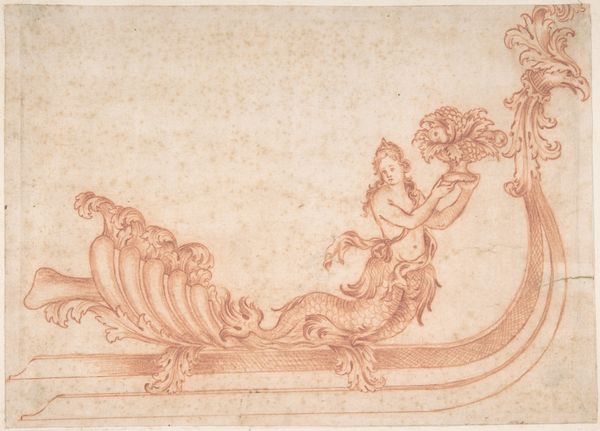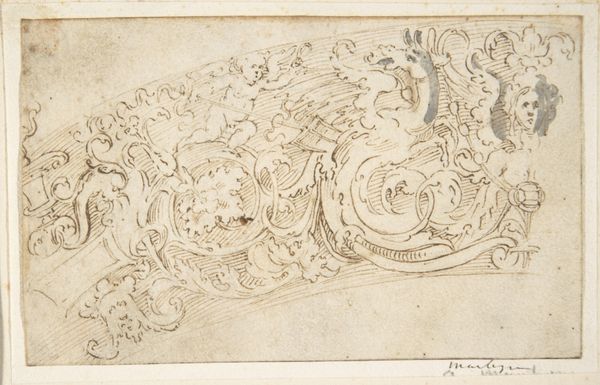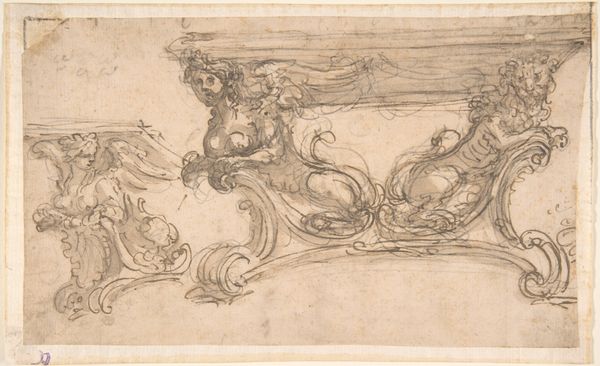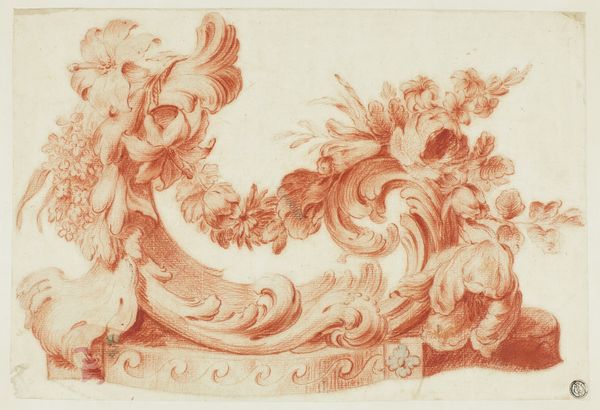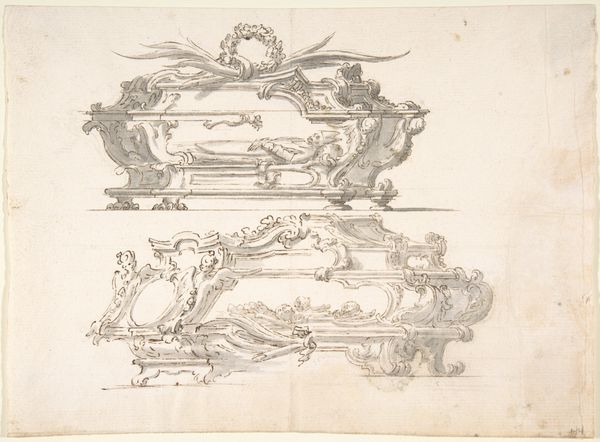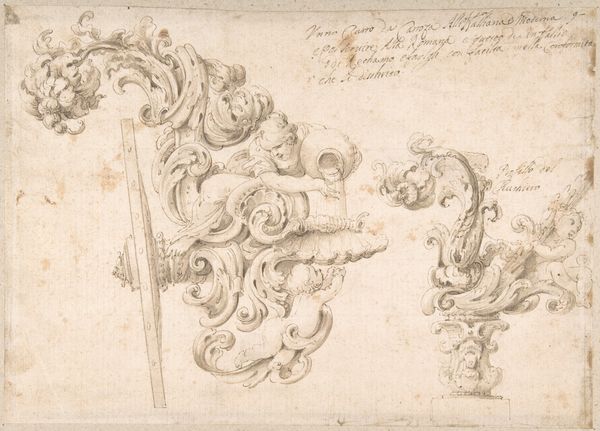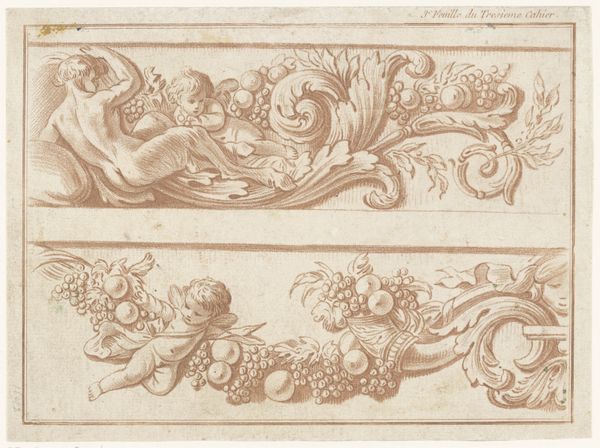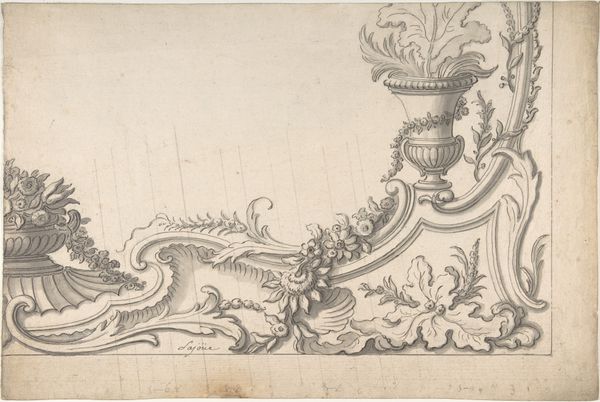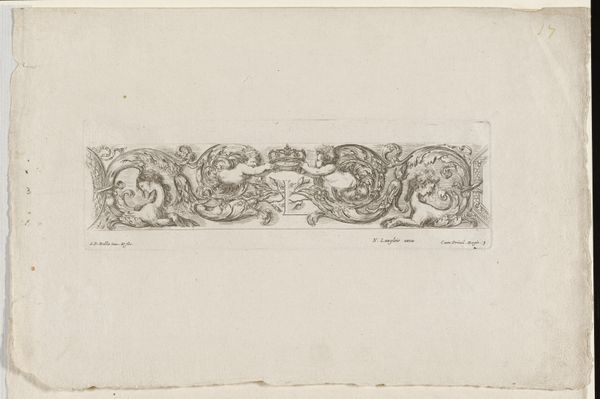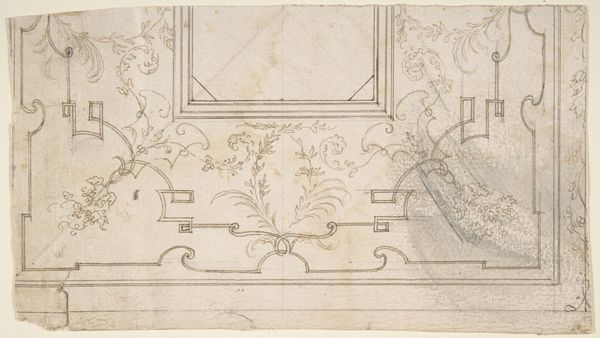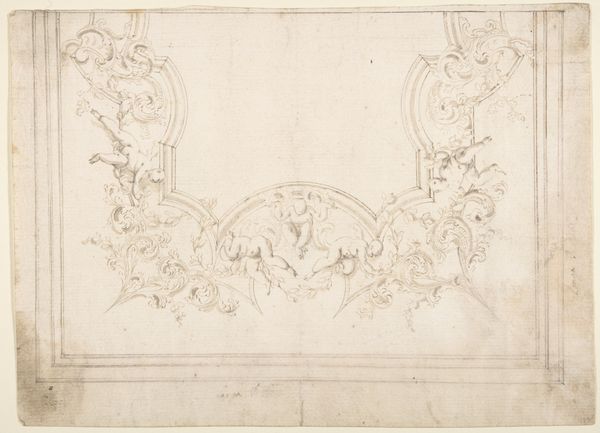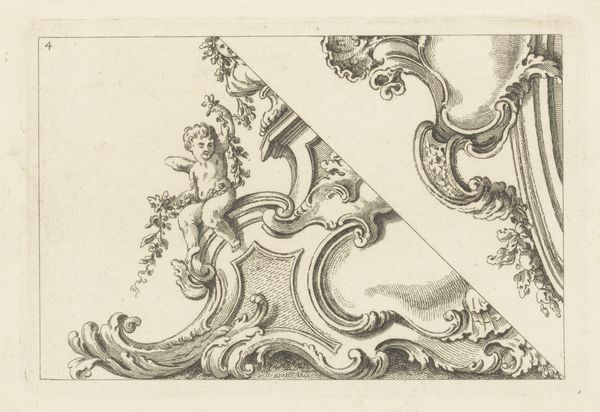
Ornament Drawing with Cartouche, Putti, and Monkeys 1685 - 1742
drawing, ornament
drawing
ornament
toned paper
light pencil work
baroque
figuration
line
academic-art
Dimensions: 7 1/4 x 18 in. (18.4 x 45.7 cm)
Copyright: Public Domain
Editor: We’re looking at Gilles-Marie Oppenord's "Ornament Drawing with Cartouche, Putti, and Monkeys," created sometime between 1685 and 1742. It's a beautiful red chalk drawing with incredible detail. It feels incredibly ornamental, like something from a palace. How do you interpret this type of piece within its historical context? Curator: Oppenord lived and worked at a time when art, especially decorative arts, served as a powerful tool of statecraft. These elaborate ornament drawings, often intended for architectural elements or furniture, were integral to projecting an image of power and refinement for the aristocracy and the monarchy. Think about Versailles – opulent displays were carefully orchestrated. Editor: So it’s less about personal expression and more about communicating status? Curator: Precisely. The Baroque style, evident in the drawing’s sweeping lines and ornate details, was a visual language understood by the elite. The inclusion of putti and even monkeys weren’t simply decorative; they alluded to classical antiquity and exotic lands, reinforcing a sense of cultivated knowledge and global reach. Do you notice where the drawing would most likely go? Editor: Possibly over a doorway or a mirror? I see what you mean about power. The cartouche, especially, feels like it's meant to highlight someone important. It really places art within the sphere of political and social ambition. Curator: Exactly. Oppenord wasn't just creating a pretty drawing; he was contributing to a much larger cultural project. By understanding the intended function and audience, we can appreciate how art actively shaped perceptions of power and legitimacy. It’s a clear reminder that what hangs on the wall says so much more. Editor: I never thought of ornamental drawings as being so closely tied to political messaging! Thanks for highlighting that, this drawing has a newfound significance. Curator: And that expanded understanding can then make visits to places like Versailles much richer, once we recognize the visual strategies involved.
Comments
No comments
Be the first to comment and join the conversation on the ultimate creative platform.
